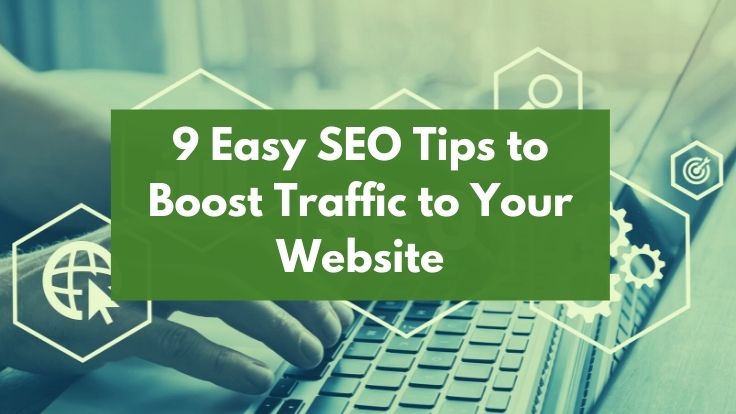Did you just build a fantastic website and try to get it noticeable by search engines? These simple SEO tips and tricks will help you rank well in Google, Bing, and other search engines. If you want your website to be discoverable, SEO is a must.
No matter the type of server your website is hosted on, you should leverage SEO so that your site hopefully appears on the first results page after someone keys a term into a search engine. The following SEO is essential for helping search engines—and people, by extension—find your site.
Table of Contents
1. Build a Well-Designed Website
Consider creating a sitemap if your site is large, new, or contains many multimedia files. A sitemap provides search engines with the information to crawl swiftly and index site pages, video, and audio. Google has a helpful sitemap generator.
Your website should encourage visitors to explore your content. For example, your homepage should typically spotlight at least a few optimized product images if you’re selling products. These actions appeal to visitors and search engines.
Don’t underestimate the value of an attractive website. If your site looks outdated, people will leave and search for a more professional-looking competitor.
2. Focus on a Specific Topic
Search engines will point people toward the most authoritative and correct results. If you’re an expert in a particular topic that you wish to explore, your website’s content should focus on that. Don’t mix food content with, say, metalworking unless your website is a massive multinational corporation or a large news organization that needs to be all things to all people.
3. Pick Relevant Keywords
To properly use keywords, you should take your website’s various elements—texts, images, videos, podcasts—and summarize them in SEO-friendly terms.
You will also want keywords in your website’s URL, header tags, meta descriptions, and alt attributes. Go to your website’s backend and place the terms in the keyword fields. Optimize keywords to match people’s searches. For example, if your website sells handwoven rugs, “rugs” and “woven” should be your keywords.
4. Create Quality Content consistently
Content quality factors into SEO as well. For example, a blog about Digital Marketing needs to answer questions or illuminate niche topics. Therefore, it’s best to go in-depth with information-packed articles, such as “How to make Digital Marketing work for you”.
Note that search engines prioritize websites with fresh, unique, changing content. Therefore, you should not copy and paste content from another site, as search engines will penalize your site. Whether in the form of new articles, art, or products, you need to update your website consistently.
5. Create Attractive Page Titles and Headlines
A page title and headline are also ways to name the same website page. The page title is a keyword-centric title designed to appear on search engines, while the latter is designed to please people who click through to the page.
For example, “2022 iPhone 13” is a tight, SEO-friendly page title that only appears in search results. “5 reasons why the 2022 iPhone 13 is good for you” is an excellent, on-page headline.
6. Optimize Your Images
The first step in optimizing your images for the web is to compress them down to a manageable size. You should keep each image under one megabyte. Resizing images to a maximum 1920 by 1080-pixel resolution using the JPG or WEBP formats will help your pages load quickly.
Ensure that your images have proper Alt attributes, too, as they help the search giant categorize your photos. In addition, alt attributes should tell what the image is all about.
7. Reduce Your Website’s Load Time
A Google Market research shows that 53% of mobile audiences leave a site if it takes more than three seconds to load. A slow website is off-putting. You can analyze your site’s speed with Google’s Test My Site, Google PageSpeed Insights or Pingdom. If you’re using WordPress, you might want to remove any plug-ins that aren’t critical to your site.
8. Write Information-Packed Meta Descriptions
Meta descriptions appear in search engine results beneath page titles, and their purpose is to explain a page’s essence in a more in-depth fashion. Here, you can write longer descriptions (approximately 150 characters!) that wouldn’t fit in page titles. Try not to throw all your keywords in there. That’s keyword stuffing, and search engines frown on that. Instead, write your meta description in simple language.
9. Address Your URLs
If your website uses dynamic URLs, addresses that rely on numbered pages, consider replacing them with static URLs. A blog post like http://thebestflights.com/post/detail?id=48574. The number at the end of the URL represents that specific post, but it’s not descriptive.
To fix that, go to your site’s backend and enable static URLs so that you can add important keywords to your site’s address. For example, with static URLs, that same post about flights will appear as http://thebestsiteever.com/post/best-flights. Search engines appreciate this more informative URL structure. Remember that brevity is essential, so don’t make the URL a keyword-packed sentence. Also, try using hyphens to break up the words in the URL instead of cramming them all together.

